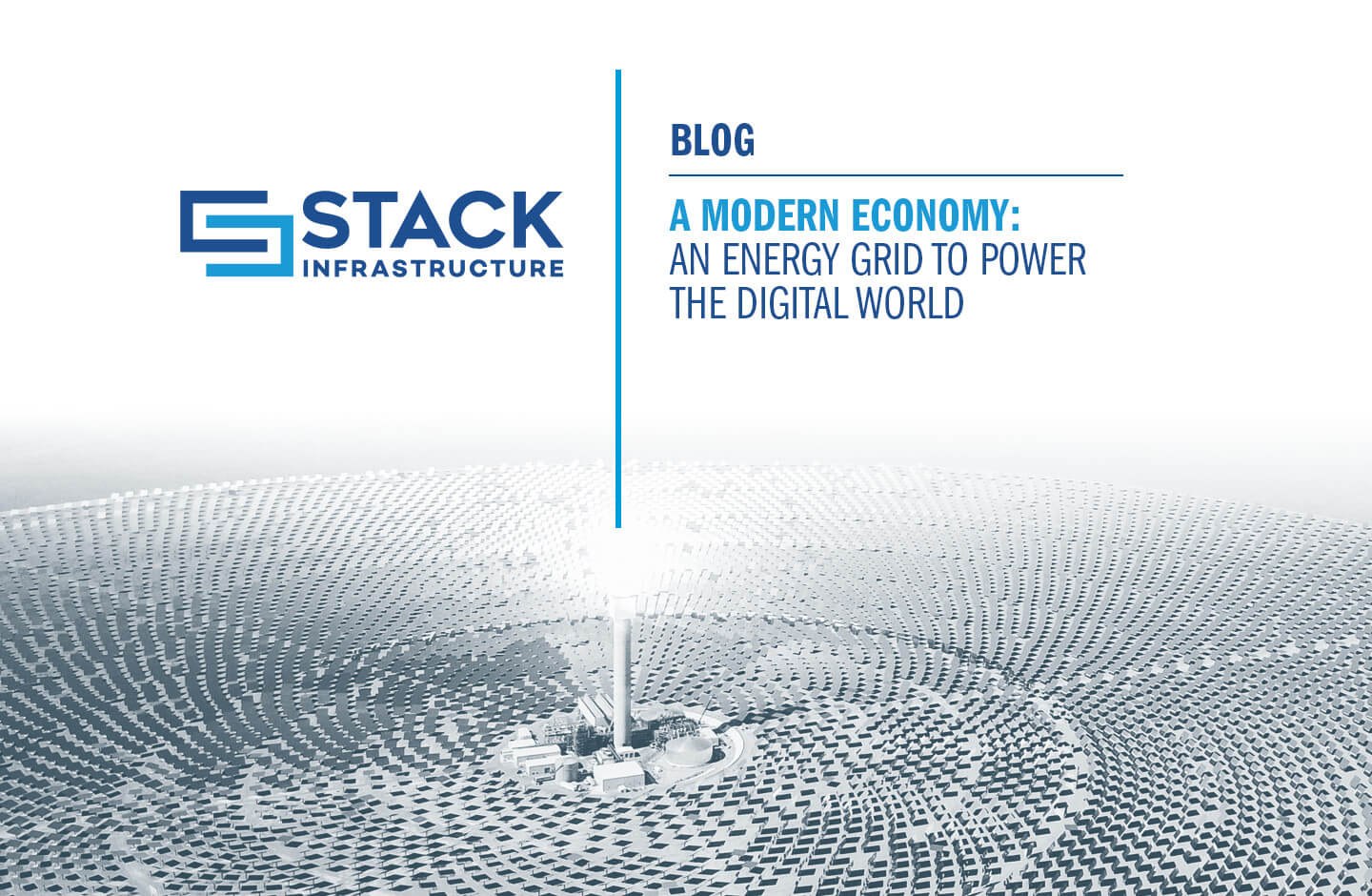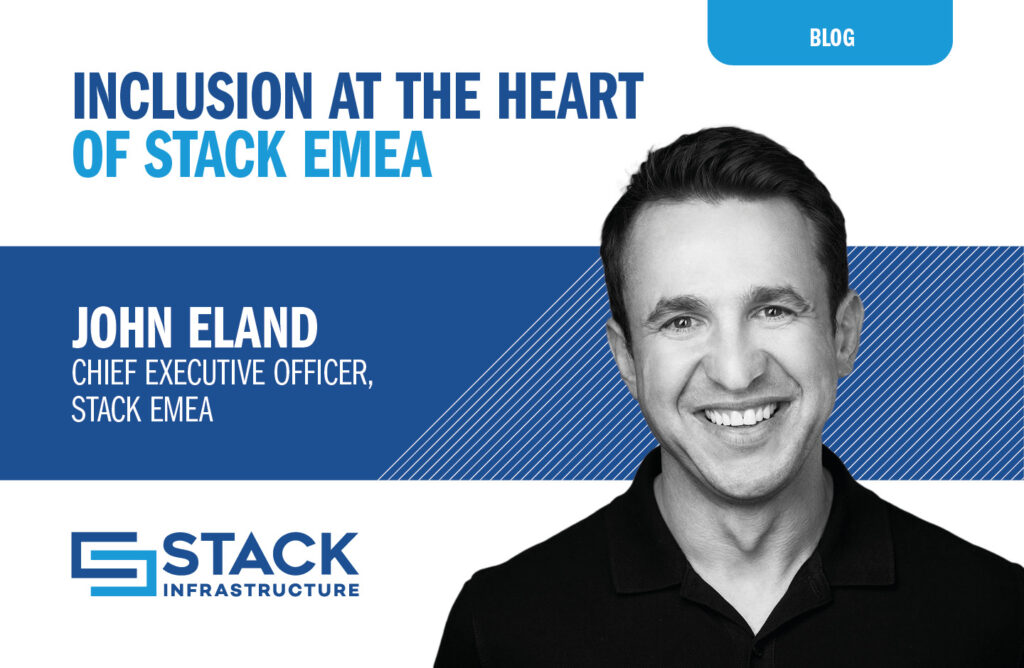A Modern Economy: An Energy Grid to Power the Digital World

Climate change is one of the most significant challenges of our time and is driving the industrial and political landscape of the world.
For decades, the U.S. has advanced efforts towards combatting climate change. Two key focus areas are the transition to clean energy generation for the electric grid and electrification of consumer items such as transportation (cars, trucks, trains, etc.) and gas- and oil-fired appliances. Governments and private organizations are championing these transitions, but they face stiff challenges. The transition needs to move quickly but is expensive, has significant regulatory and permitting hurdles, and is facing supply chain constraints. This transition must occur concurrently with the growth of the modern economy so families and communities have the jobs they need to prosper.
Digital Infrastructure Drives Daily Life
Data centers store and process the data that enables or enhances nearly every aspect of our lives. As an industry, data centers are leaders in the development and procurement of clean energy generation and spur the development of grid infrastructure necessary to support the interconnection of clean energy and electrification of consumer items. As a result, data centers share a nexus of challenges and opportunities with the clean energy and electrification transition and are essential infrastructure for the modern economy.
The modern economy is the shift in economic activity from traditional manufacturing primarily based on physical labor to advanced manufacturing and services utilizing innovative technology to improve products and processes. Advanced manufacturing increases efficiency and demands less energy while enabling sustained economic growth. The continual progression of advanced manufacturing and other industries requires more digital infrastructure, which data center developers are working hard to supply, all while driving leading sustainability goals.
In addition to providing the foundation for economic growth and technological advancements in the modern economy, the data center industry is driving the transition to clean energy generation. In 2022, a total of 326 corporations contracted 77.4 gigawatts (GW) of clean energy. At the top of the corporate leaderboard, U.S. based technology firms contracted more clean energy than any other industry at 37GW. Data center providers and customers are responsible for two-thirds of the U.S. corporate renewables market.
The development of clean energy and the sustainability targets of the digital infrastructure industry are entwined.
Clean Energy Generation and Transmission Infrastructure
In the Americas, clean energy contracts increased 18%. Last year in the U.S., renewable energy accounted for 21.5% of the total utility-scale electricity generation in the U.S. While this progress is inspiring – especially considering that less than a decade ago, renewables comprised 13% of U.S. energy consumption – if the U.S. maintains the same installation volume as 2022, it will cover only 30% of the necessary capacity to achieve a 100% carbon-free power sector by 2035.
The reality is that clean energy development is not keeping up with demand. 2022 was the third-highest year on record for U.S. utility-scale solar, wind, and storage installations, and yet, total clean power installations – including solar, wind, water, geothermal, etc. – declined for the first time in five years. By the end of last year, 53GW of projects were experiencing delays, resulting in a 15% decrease in deployment volume from 2021. According to American Clean Power, “unclear permitting timelines, trade policy uncertainty, transmission shortages, difficulties sourcing solar panels, unresolved [Inflation Reduction Act] IRA implementation, and interconnection queue challenges” caused delays of six months or longer. By the end of 1Q 2023, over 63GW were delayed, resulting in the lowest Q1 in three years.
The U.S. grid, particularly its bulk transmission infrastructure, also requires significant new investment to support clean energy development, electrification, and the modern economy. The lack of interregional electric transmission in the U.S. is contributing to grid outages and inflated energy prices. Consequently, from 2012 through the first half of 2022, extreme conditions and high-value periods grossly impacted energy prices with only 5% of hours contributing to 50% of transmission’s congestion value. The U.S. Department of Energy’s Transmission Needs Study found that to support such moderate/high scenarios, the U.S. would need to increase today’s system by 57% with approximately 47,000 gigawatt-miles of high voltage lines by 2035.
The study found that the future power grid will need significant transmission deployments across multiple regions: in the Plains, Midwest, and Texas regions by 2030; the Mountain, Mid-Atlantic, and Southeast regions by 2040; and interregional transmission deployment between nearly all regions by 2040. According to John Moura, the Director of Reliability Assessment at the North American Electric Reliability Corporation, building hundreds of miles of new transmission lines can take 10 to 15 years – which means action must be taken now.
There are important conversations happening among innovators, businesses, and government leaders that are driving for vast changes. The Inflation Reduction Act in August 2022 featured incentives to increase renewable energy generation, and there are a number of permitting bills that have been recently put forward. One piece of legislation of particular note is the Building Integrated Grids with Inter-Regional Energy Supply (BIG WIRES) Act proposed by Sen. John Hickenlooper (D-Colo.) and Rep. Scott Peters (D-Calif.). The act would require regions to be able to transfer at least 30% of their peak demand between each other. To achieve this, proposed solutions include new transmission lines; upgrades to existing facilities; energy efficiency to reduce peak demand; new generation that frees up capability to move power; and grid-enhancing technologies such as advanced power flow controls or dynamic line ratings.
Such transmission deployment could have a benefit-to-cost ratio as high as 2.5 and would inevitably result in significant energy cost savings. A hypothetical 1GW line, theorized in a study from Lawrence Berkeley National Laboratory, could have a value of $29 million to $505 million depending on the region.
Data Runs on Energy
Clean energy technologies, including electric vehicles, electric heating systems, and electrified household appliances, and the data that drives their innovation, from energy efficiency programs to the Internet of Things, all require digital infrastructure. The energy usage and future demand of digital infrastructure is growing to support the modern economy, and the simmering issues of slow development of clean energy generation and under-investment into utilities and transmission are beginning to boil.
Climate change is a universal concern. Mitigation requires collaboration and innovation from industries, utilities, governments, communities, and universities across disciplines and sectors to create technological, political, and social solutions that address the environmental and socio-economic impacts of global climate change. Two years ago, STACK achieved 100% renewable energy across our data centers in the U.S., and our thought leaders have been working behind the scenes with clients, utilities, municipalities, and government officials alike to identify opportunities to advance climate goals.
This article launches an astute blog series titled “A Modern Economy” that will provide technical and policy insight into the current industry discussions around the core challenges and opportunities of the infrastructure transition to support the modern economy. Upcoming discussion topics include data center cooling with reclaimed water to support potable water usage goals; scale batteries to reduce carbon emissions of backup generation; the critical role data center development has on economic success; and more.
The series is intended to bring a focus to the way these topics impact overall development and operations of data centers, and by extension, the economic growth and advancement of sustainability within the communities of established and emerging data center markets.
Stay tuned for our next blog from STACK’s thought leaders for further insight into the largest global concern of our time.
By Kevin Hughes, Vice President of Policy, STACK Americas & Tim Hughes, Senior Vice President of Strategy and Development, STACK Americas
July 27, 2023




